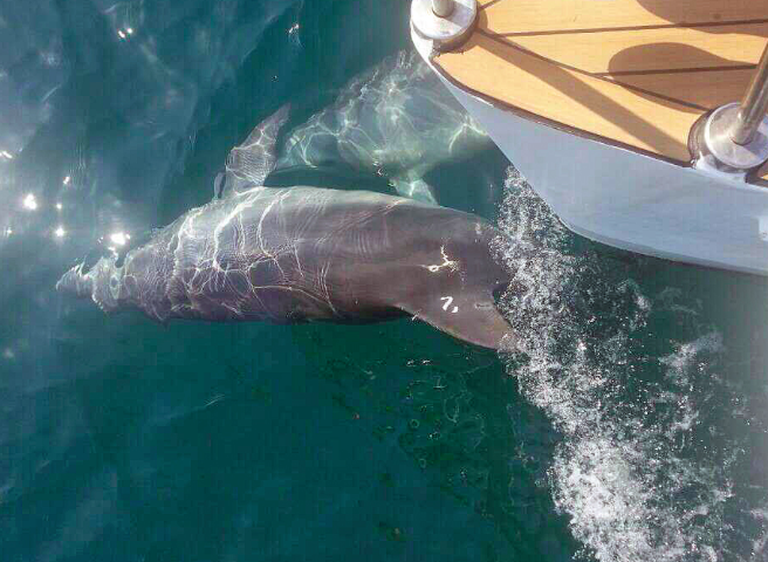
Niseko, Toya-Usu and Shiraoi are three Hokkaido destinations for travellers who want to feel close to the communities they’re visiting.
The sighting of Sampal off the coast of South Korea confirms that reintroduced dolphins can survive, breed and have a family.
The story of Sampal started in the early 2000s when she was captured by the Pacific Land, one of the three aquariums with dolphins of South Korea. In 2013 South Korea’s Supreme Court, with the help of some activists, decided that Sampal and three other dolphins must be released back into the wild.
Reintroduction and naturalisation, which saw the participation of Dolphin Project founder Rick O’Berry, started. After this period Sampal, along with Chunsan and Jedol, was released into the wild. And in late March of this year researcher Mi Yeon Kim noticed in a pod of about 55 dolphins, the unique back fin of Sampal. And, surprisingly, she was with her calf.
Today the dolphin is about 13-15 years old, has spent four years in the aquarium with dolphins and was freed three years ago. “We now have a solid example of not only a successful release of a dolphin back into the wild to her pod, but the successful birth of her offspring after years in captivity”, director and founder of the Wild Dolphin Project Denise Herzing told the National Geographic.
This is an evidence that the reintroduction was successful and that it also helped create a next generation of wild dolphins. The calf and Sampal, indeed, were spotted in a pod. But there’s more: Sampal and Chunsam (a 5 year older female dolphin) are often seen together, continuing a connection that was established in the Pacific Land aquarium.
“This is not to say that all captive dolphins can or should be returned to their natural homes. But all captive dolphins may be re-adapted to a more natural environment”, states O’Berry in the NGO’s website.
Korean researchers who are observing the group of dolphins reported that the reintroduced specimens swim, surf, hunt and mate and that “they are able to keep up with the wild individuals”.
Siamo anche su WhatsApp. Segui il canale ufficiale LifeGate per restare aggiornata, aggiornato sulle ultime notizie e sulle nostre attività.
![]()
Quest'opera è distribuita con Licenza Creative Commons Attribuzione - Non commerciale - Non opere derivate 4.0 Internazionale.
Niseko, Toya-Usu and Shiraoi are three Hokkaido destinations for travellers who want to feel close to the communities they’re visiting.
We talked to World Happiness Summit organiser Karen Guggenheim about the connection between the planet’s health and our happiness.
The new generation of high-performance wood materials offers unexpected hi-tech possibilities to the worlds of design and architecture.
A group of experts in Tokyo suggested pouring radioactive water from Fukushima into the open sea. A marine biochemist explains the consequences of this absurd decision.
By recovering clothes discarded in the West, Togolese designer Amah Ayiv gives them new life through his high fashion creations.
All catwalks in July will be broadcast online: after Paris, it’s Milan Digital Fashion Week’s turn. And the biggest beneficiary is the environment.
Disabled travellers need not fear Japan. Accessible Japan founder Josh Grisdale tells us about his commitment to opening the country’s doors to everyone.
Kalongo Hospital in Uganda is on high alert. Medics are facing the pandemic amid an already precarious healthcare situation, in a country with only 55 intensive care beds.
Indigenous peoples in the isolated region are suffering from poor access to health, with several cities becoming hotspots of coronavirus in the Amazon. Indigenous leaders, health experts and NGOs are calling for international help.









